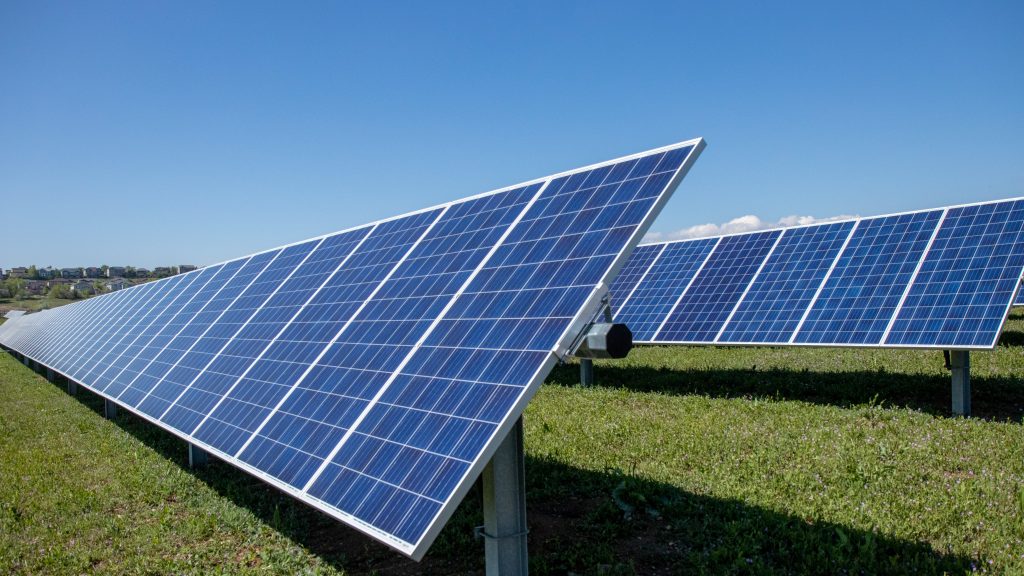HAYDEN – Around the nation and in Colorado, coal-fired power plants are headed for extinction – part of cutting back on carbon emissions and combating climate change.
And thanks to the federal Infrastructure Act, the rapidly growing sector of renewable energy – solar, wind, storage, tidal and geothermal — is on track to build renewable infrastructure near transmission lines that carry electricity generated from burning coal.
Locating renewable energy sources near existing transmission lines is seen by utilities as a way to save money and increase profits.

Local, state, and federal governments are trying to facilitate that goal by streamlining building and land-use codes. In early May, Routt County officials, planning staff, consultants, and residents got a taste of what all these changes might mean at day-long meetings in Hayden, which is scheduled to see the closure of nearby power plants over the next few years – Hayden 2 will retire in 2027, Craig 2 and Hayden 1 will retire in 2028.
Statewide, Xcel Energy anticipates adding approximately 2,300 megawatts of wind, 1,600 megawatts of large-scale solar, 400 megawatts of battery storage, and 1,300 megawatts of flexible “always available” generation. The actual level and type of resources acquired will be based on the bids received.
“We shared with the (Routt County) Commission the response to our 2022 All-Source Solicitation for the Clean Energy Plan, which had an unprecedented 1,073 total proposals submitted for new energy generation, including new renewable energy and storage options,” said Michelle Aguayo, communications director for Xcel. However, Xcel has so many proposals to wade through, that it has a 170-day deadline beyond March 1, to outline proposals that best meet future energy needs, while also considering cost impacts, she added. The outline should emerge in mid- to late-August.
While Xcel has not identified its contenders for building utility-scale solar arrays in the Hayden area, the Routt County Planning Staff is aware of two companies that are interested:
- RWE in America, which has an array of on- and off-shore wind, solar, and storage projects across the country. With the acquisition of Con Edison Clean Energy, RWE is now the number four renewable energy company in the U.S. and the country’s second-largest solar owner and operator; and
- Apex Clean Energy, of Charlottesville, North Carolina, which has active utility-scaled wind, solar, and energy storage projects across 20 states. Apex also specializes in community (shared) renewable energy development, where any customer can use renewable power, even if renewable sources are miles away.
These renewable energy developers are looking at land south of Hayden and south of the Hayden power station. Accordingly, the Routt County Planning Department, together with the Design Workshop, is trying to identify issues of concern to local farmers, ranchers, Hayden-area businesses, and residents, as county staff strive to update the county subdivision/zoning code, so as to facilitate the growth of solar energy.
Two areas of concern are the impact of solar farms on local wildlife (deer, elk, and sage grouse) and where the workers would live for the six-to-nine-month construction phase.
The two companies are looking at flat and sloped land, with a good orientation to the south.
Alan Goldich, a county planner, said the potential for utility-scale solar farms in the Hayden area is 2,500 to 3,500 acres.
On average, five acres of solar can generate one megawatt of electric power, said Mike Kroger, president and CEO of Colorado Solar and Storage Association COSSA), which is a trade association of Colorado solar and energy storage industries. “Regarding energy storage,” said Kroger, “I assume that the developers would have offered that to Xcel as an option. Xcel wants to add hundreds of megawatts of energy storage, but the location is to be determined. The general idea is to add energy storage either with big solar installations like what is planned for Routt County, or close to the load in the Denver area. Where those batteries will end up is unclear to me. That’s an Xcel decision.”
Solar arrays are currently permitted in Routt County by special use permit in agriculture and forestry areas, but significantly bigger solar farms come with potential impacts that are not addressed by current codes, he said.
For example, the Yampa Valley Community Solar Garden near Craig is 2.5 acres. A bigger array, 20 acres, is planned for the Craig area, with ground-breaking in May.
Goldich said county planners are looking at the height of proposed solar arrays above the ground; setback from roads and fences; fencing; access for maintenance crews; vegetative management; and agricultural impact.
Kacie Peters, director of business development for Pivot Energy, said that vegetative management can entail planting deep-rooted grasses and nitrogen fixers that will result in improved soils at the end of a 25-30 year lease period. “For an area like the Yampa Valley, a solar array could accommodate sheep grazing that would happen below the solar panels. Cattle grazing—not so much. Cattle like to rub on solid objects to relieve itches. Wouldn’t be good for solar panels,” said Peters. Pivot counts Chicago, Denver and Breckenridge as clients, as well as schools, universities such big-box businesses as City Markets and Whole Foods, or with large land owners, such as the U.S. Army.
Routt County’s Goldich said he and his planning department associates are on track to have a streamlined permitting process ready for review by late August. That’s also the time that Ecel announces the winning proposals for renewable energy.





